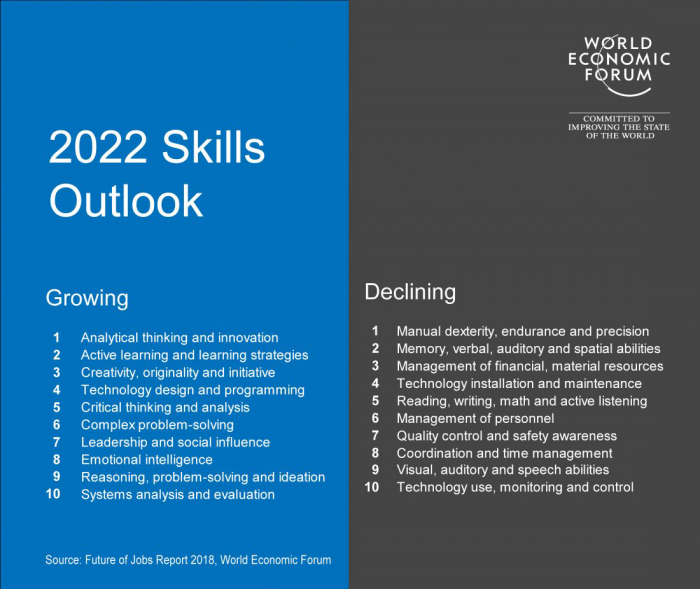Global manufacturing executives rank “skilled talent” as their #1 competitive differentiator. When it comes to innovation, building capabilities and applying the right leadership style give top performing manufacturers the edge over skills-focused peers.
As the manufacturing sector speeds into a world of futuristic tech and disruptive business models, creativity and innovation are becoming critical skills for figuring out how to unlock value strategically. Attracting the most skilled talent has already become a strategic focus for future-forward companies. In order to prepare for the coming skills shortage in manufacturing, business leaders must assess their current capabilities, refine their market strategy, build a culture of innovation, and ensure that they have the most effective leadership styles in place.
84% of manufacturing executives say they plan to add technology roles in the next 5 years to keep pace with the demands of a rapidly changing industry. The industry will need to add manufacturing software engineers, robotics specialists, machine learning specialists, automated systems engineers, cybersecurity specialists as well as designers, product engineers, developers, analysts, pricing strategists and procurement specialists, many of which are forecast to be in short supply in years ahead.
84% of manufacturing executives say that they will hire for technology roles in the next 5 years. (Deloitte’s The Skills Gap in US Manufacturing)
At the same time, the core job skills needed to be successful in manufacturing are fundamentally changing, creating a gap between supply and demand. Low-skilled, repetitive labor is being automated, while skills like innovation and creativity are more and more in demand. But how do you hire for creativity, innovation and strategic thinking, and create the right culture to support and develop it?
These skills will be necessary for manufacturing companies to latch on to new models, processes and products in a rapidly changing world, but they don’t always fit simply into old frames like “jobs.”
The End of “Jobs” and the Beginning of Capabilities
Traditional “jobs” were a method of structuring collections of skills that emerged out of the earlier industrial revolutions and were further developed with the computerization of work. With automation and digitization, many of the skills manufacturers are used to hiring for will be taken over by machines.
Companies will assemble, disperse and rearrange skill combinations based on strategic objectives, and an analysis of the capabilities they need to execute. They can then decide whether to train, hire, automate, partner or acquire whole companies to obtain the competencies they need.
The most important qualities will become the most human, like the ability to innovate and relearn, a quality that is a bit antithetical to a more traditional skills outlook.




